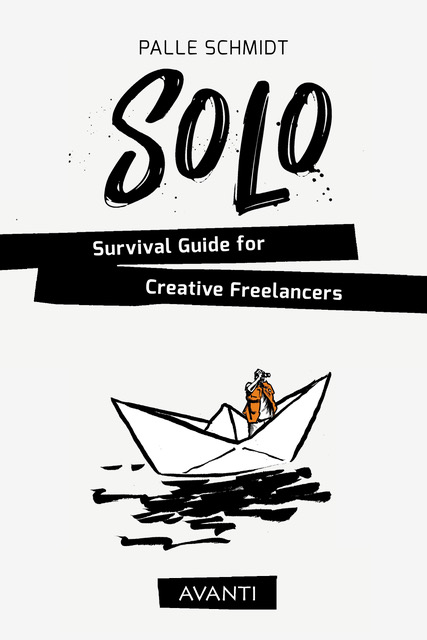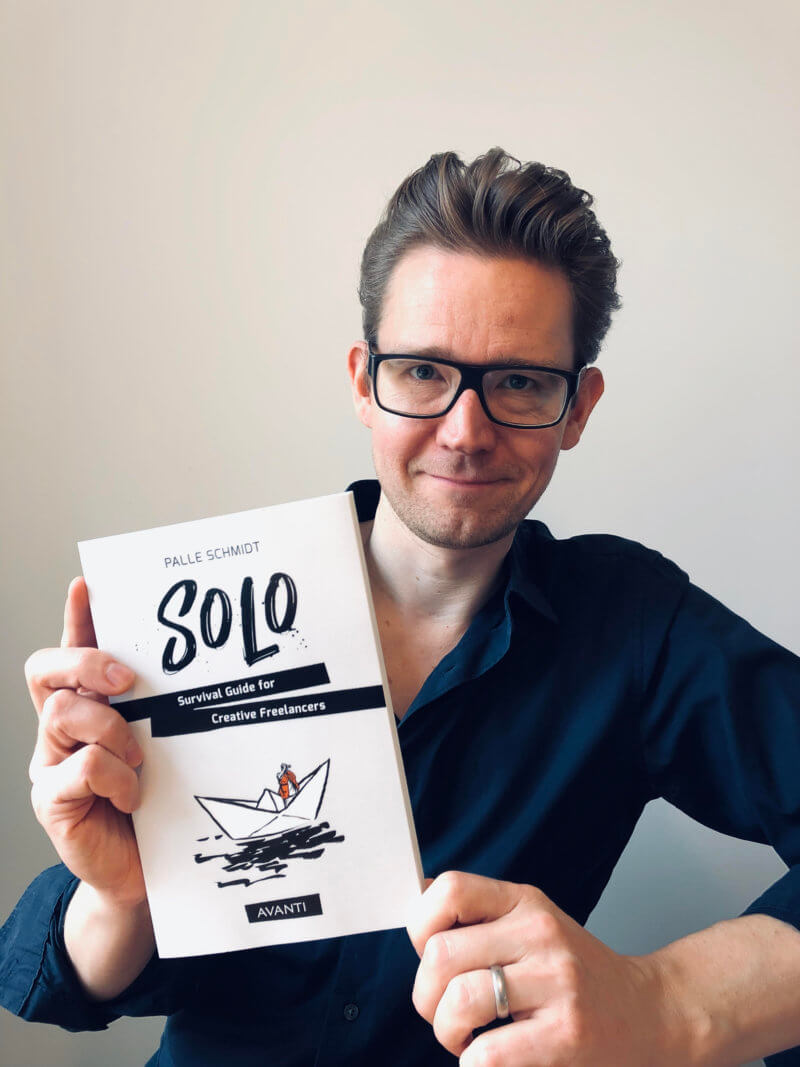

Being an independent writer, illustrator, anything can be nerve wrecking. You might not know where to start, or the questions that you have cannot be answered right away. You lack mentors or you just lack inspiration sometimes. There are so many obstacles that can hinder the journey. Palle Schmidt has been there.
He is a writer, illustrator and comic book artist living in Copenhagen, Denmark, with his wife and two daughters. Without a formal education, Palle started his career writing and drawing for the Danish roleplaying magazine “Fønix” and later became one of the editors. He wrote numerous scenarios for Danish RPG conventions, and received several awards for his work in this media.
When I started bookblogging just three months ago, Palle was one of the first authors to reach to me about his book. I could not say no to SOLO: Survival Guide for Creative Freelancers and have already raved about it here if you haven’t checked that out already. My conclusion to the book review would be incomplete without talking to Palle himself! Enjoy the Q&A!
- Who is a freelancer?
I’d consider everyone who sells their services to several employers a freelancer. But my book SOLO focuses on the creative pro who has an artistic vein of some kind, something they want to create whether they have clients or not. I see a lot of entrepreneurship advice out there and a lot of that is growth oriented. I don’t mind growth but I’m not out to create an empire, simply to carve out a sustainable career for myself.
- I recently wrote an article about being a bookblogger and the biases I had to counter to rethink myself as a writer. Do freelancers face similar situations where they might not identify with the bigger crowd of professionals and find it hard to take pride in their niche? What are some quick actionable steps you would suggest to them?
I’ve never really felt part of any crowd, I always feel like I snuck in to the party and I’m just waiting to be found out! Here’s the thing; Everyone else feels the same way. I would suggest you find someone else who you kind of admire in your niche and try to find out what their approach is. Maybe there’s something you can emulate. If not, see if you can find someone in another niche to learn from. It can be tempting to “fit in” but your energy is best spent doing you, rather than trying to be someone else.
- If you had not been an illustrator or a writer, what do you think you would have been? Which other creative arts would you have explored?
I’ve been proudly unemployable for 20 years so that’s a hard question to answer. I can’t really think of anything else I’m good at. I do some teaching, so maybe that would be an option? As you can tell from the book I have a tendency to lecture! Ha ha!

- Why did you become an illustrator and writer?
I always liked telling stories and when I discovered I could draw, making comics sort of made sense. I also loved reading comics as a kid. I just never never knew hos to go from A to B so for a long time illustration became my main thing. I got sucked up by roleplaying games in the late 80’s and way into the 90’s where I created a magazine with a bunch of friends. Storytelling was always part of my DNA. Only in later years have I finally taken the writing seriously and started focusing more on words than pictures. Writing is endlessly more thrilling to me than drawing – but it’s also way harder to do.
- You mention a number of artists and peers that you have met in your travels. What is one thing you have taken away from each of them?
Too many to list but I can mention a few. I learned a lot about the comics scene from going to conventions and connecting with dozens of artists, writers and editors. Specifically Dean Haspiel taught me about the value of community and service and I think I stole a quote of his about “showing up to the party.” I also love the quote from Jeremy about allowing yourself to suck in the first draft: “You can’t fix something if it doesn’t exist.” I also learned a lot on how NOT to do things, like the guy who was obviously stoned while showing his portfolio at NYCC! The main thing I learned going to all these conventions abroad are networking skills. I simply had to chat people up because I didn’t know ANYBODY.
- What role does collaboration play in being a successful solopreneur?
Oh, it’s huge. No man is an island and you can really learn from working with others. But eventually you have to stop hiding behind collaborators and go out on your own – At least if you want to become a brand of your own.
- Which are some books that you believed have challenged your thinking and processes of engaging in creativity?
I usually recommend The War of Art by Steven Pressfield and The Subtle Art of Not Giving a F***k by Mark Manson. Anything by Seth Godin will also change your perspective for the better. Oh, and Elizabeth Gilbert’s Big Magic.
- What advice would you give to creatives?
For anyone to keep growing in an artistic area, the main thing is to look outside your own niche and see what other industries are doing.
- You mention that having kids have not limited you, contrary to what people often fear. What are some fun projects and ideas that you think you would not have pursued without your kids?
I think I would have travelled less and taken longer with my comics work. I also think having kids has opened up parts of my writing in unforeseen ways. The five kids books I wrote with my wife were very much a collaborative effort which included the kids. We could not have written those books without first hand knowledge of how kids see the world. Like when we visited the cathedral at the Vatican and our youngest was more interested in the cracks between the tiles on the floor than the majestic dome and all the gold and statues.
- Your wife has been a pillar of support throughout your career and I found a lot of value in the conversations with her that you shared in the book. She is also a writer. How have you honed each other’s skills in your creative work as well as pushed each other forward, apart from emotional support?
Well, I think I’ve helped her more in terms of plotting and feedback. She rarely reads my books – at least not until long after publication. Apart from the books we wrote together I think we have different tastes in subject matter and very different writing methods. She tends to discover the story along the way and produce a lot of words on the page, where I’m more of a planner. As I write in SOLO, I think getting feedback and creative sparring from those closest to you can often muddy the waters and you can end up discussing something else.
- What would you tell your younger self when it comes to writing?
That everyone else is also just making it up! That you get better the more you write. That the doubt never goes away and to ignore the well-meaning advice of peers, if you find they’re holding you back rather than cheering you on.

** SOLO: Survival Guide for Creative Freelancers is now out in stores so get a copy and let me know what you think! **
Amazon Print
Amazon Kindle
Be sure to check out my book thoughts if you haven’t already. 🙂

Be First to Comment